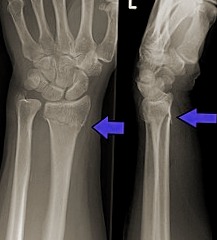How Much Can You Earn as a Real Estate Photographer?
Real estate photography, a highly specialized field in the photography industry, has grown tremendously in recent years. With the rise of online property listings, high-quality photographs have become essential marketing tools in real estate. They can make the difference between a property that’s overlooked and one that attracts numerous potential buyers.
As a real estate photographer, you play a crucial role in showcasing a property’s best features and conveying its unique appeal. But beyond the satisfaction of capturing beautiful interiors and exteriors, you might be wondering about the financial prospects of a career in this area. This blog post explores how much you can earn as a real estate photographer, what factors influence your income, and how to maximize your earnings. So whether you’re a seasoned photographer contemplating a shift into real estate or a newbie starting from scratch, this guide will provide valuable insights into the earning potential in this fascinating field.
The average Real Estate Photographer’s compensation is $53,870 as of May 01, 2023, but the salary range typically falls somewhere between $44,837 to $66,253. In Dubai, the average Real Estate Photographer’s salary is AED 6000 a month or AED 72000 a year.
What Is Real Estate Photography?
Real estate photography is a specialized genre of photography that focuses on capturing images of properties, including residential and commercial real estate. Real estate photography primarily aims to showcase properties in their best light and attract potential buyers or renters.
Real estate photography aims to capture a property’s essence and unique features, highlighting its interior, exterior, and surrounding environment. The images effectively convey the property’s size, layout, architectural details, and overall aesthetic appeal. That requires careful composition, attention to detail, and an understanding how to use light to enhance the property’s features.
Real estate photography can encompass various types of shots, such as:
- Interior Photography: Capturing the interior spaces of a property, including living areas, bedrooms, kitchens, bathrooms, and other distinctive features.
- Exterior Photography: Showcasing the property’s exterior, including the facade, landscaping, outdoor spaces, and architectural elements.
- Aerial Photography: Utilizing drones or elevated platforms to capture aerial views of the property, showcasing its location, surroundings, and nearby amenities.
- Twilight Photography: Taking photographs of the property during the “twilight” hours, when the natural and artificial lighting creates a warm and inviting ambiance.
Real estate photography plays a crucial role in the real estate industry, as visually appealing and professionally captured images can significantly impact a property’s marketability and sales potential. With the increasing reliance on online listings and virtual tours, the demand for high-quality real estate photography has grown significantly in the USA and UAE.
Skills Needed to Be a Successful Real Estate Photographer
To be a successful real estate photographer, several skills are essential. These skills go beyond photography techniques and extend to understanding the real estate market and effectively communicating with clients. Here are the critical skills needed for success in this field:
1. Photography Skills: A solid foundation in photography is crucial. That includes understanding composition, lighting techniques, exposure, and equipment operation. In addition, mastering the technical aspects of photography will help you capture high-quality images that showcase the property effectively.
2. Real Estate Market Awareness: To excel in real estate photography, you should understand the real estate market well. That includes knowledge of current trends, popular architectural styles, and the features buyers and renters value in properties. Knowing market dynamics will help you capture images that resonate with potential clients.
3. Post-Processing and Editing: Proficiency in post-processing and photo editing software is essential. You’ll need to enhance and fine-tune your images to achieve the desired look and showcase the property’s best features. Familiarity with programs like Adobe Lightroom or Photoshop can significantly enhance your final images.
4. Attention to Detail: Real estate photography requires meticulous attention. Ensuring that each image is well-composed, free of distractions, and accurately represents the property is vital. Small details can make a significant difference in the overall quality and impact of your photos.
5. Communication and Interpersonal Skills: Building relationships with clients, real estate agents, and homeowners is crucial. Effective communication and interpersonal skills will help you understand clients’ expectations, collaborate with them to achieve desired outcomes, and ensure a smooth working relationship.
6. Time Management and Organization: Real estate photography often involves working within tight deadlines and managing multiple projects simultaneously. Strong time management and organizational skills will help you stay on top of your assignments, deliver images promptly, and maintain a professional reputation.
Equipment and Tools for Real Estate Photography
Having the right equipment and tools is essential to excel in real estate photography. Here are some essential items you should consider:
1. Camera: Invest in a DSLR or mirrorless camera with manual control capabilities. Look for a camera with good low-light performance, high resolution, and a wide dynamic range to capture the details and colors of the property effectively.
2. Wide-Angle Lens: A wide-angle lens is crucial for capturing the expansive interiors of properties. Opt for a lens with a focal length between 14mm and 24mm, as it allows you to capture more of the room in a single frame and create a sense of space.
3. Tripod: A sturdy tripod is essential to ensure sharp images and prevent camera shake. Look for a tripod that is lightweight, easily adjustable, and has a sturdy build to support your camera and lens.
4. External Flash or Lighting Equipment: Real estate interiors often require additional lighting to expose the scene and highlight details correctly. Consider investing in external flash or lighting equipment, such as softboxes or diffusers, to provide controlled and even lighting.
5. Drone: A drone can add an extra dimension to your real estate photography by capturing aerial views of properties and their surroundings. Check local regulations and obtain the necessary permits before using a drone for commercial purposes.
6. Software Tools: Post-processing software such as Adobe Lightroom or Photoshop is essential for editing and enhancing images. These tools allow you to fine-tune exposure, correct colors, remove distractions and showcase the property’s best features.
7. Measuring Tools: Having measuring tools like a tape or laser measure can be helpful for accurately measuring rooms and spaces in the property, ensuring accurate representation in your images.
How to Get Started in Real Estate Photography
Getting started in real estate photography requires building a portfolio, networking with industry professionals, and marketing your services. Here are some steps to help you embark on your real estate photography journey:
1. Build Your Portfolio: Start by building a real estate photography portfolio. If you have yet to get any previous real estate photography work, consider photographing properties for friends or family members or even offering your services for free or at a discounted rate to build your portfolio. Aim to showcase a variety of properties and demonstrate your ability to capture different types of spaces effectively.
2. Develop Your Skills: Continuously improve your photography skills and master the techniques specific to real estate photography. Experiment with different lighting setups, composition techniques, and post-processing styles. Use online tutorials, workshops, and resources to enhance your knowledge and expertise.
3. Network with Real Estate Professionals: Connect with local agents, brokers, and property managers. Meet potential clients at real estate industry events, open houses, and networking gatherings. Building relationships with professionals in the industry can lead to referrals and collaborations.
4. Offer your Services: Market your real estate photography services to local professionals. Create a professional website or online portfolio to showcase your work and services. Consider offering introductory discounts or incentives to attract new clients.
5. Collaborate with Home Staging Professionals: Partner with home staging professionals or interior designers to enhance your portfolio and offer comprehensive services to clients. Collaborating with professionals in related fields can provide added value to your clients and help you stand out from the competition.
6. Utilize Online Platforms: Leverage online platforms and listing websites to showcase your work and reach a wider audience. Create social media profiles to share your portfolio, engage with potential clients, and stay updated with industry trends.
7. Continuously Learn and Improve: Stay up-to-date with the latest trends and techniques in real estate photography. Attend workshops, conferences, and online courses to expand your knowledge and enhance your skills. Be open to feedback and continuously strive to improve the quality of your work.
Potential Income for a Real Estate Photographer
The potential income for a real estate photographer can vary depending on several factors, including location, experience, clientele, and the range of services offered. While it’s challenging to provide exact figures as earnings fluctuate, we can provide a general overview of the income range in the industry.
- Geographic Location: Income potential can vary significantly based on the local real estate market and the cost of living in a particular area. Real estate photographers in metropolitan areas with a high demand for properties often have more significant earning potential than those in smaller towns or rural areas. As of May 31, the average Real Estate Photographer’s salary is $53,870 in 2023. However, the salary range typically falls between $44,837 and $66,253.
- Experience and Skill Level: As with any profession, experience plays a role in income potential. You can command higher service rates as you gain more experience and build a strong portfolio. Clients are willing to pay a premium for photographers with a proven track record of delivering high-quality images.
- Type of Clients: The clients you attract can influence your income. Working with high-end luxury real estate agents or commercial property developers can potentially lead to higher-paying assignments than working with individual homeowners or smaller real estate agencies.
- Range of Services Offered: Expanding your services beyond photography, such as offering virtual tours, aerial photography, or video walkthroughs, can increase your income potential. Providing a comprehensive package of services can attract more clients and justify higher rates.
- The volume of Work: The number of assignments you take on can impact your income. A consistent flow of projects and repeat clients can contribute to a stable income stream. However, balancing workload and quality is essential to maintain a strong reputation.
Potential Income for a Real Estate Photographer in Dubai
The potential income for a real estate photographer in Dubai can vary depending on several factors, including experience, skill level, client base, and the demand for real estate photography in the area. In Dubai, The average Real Estate Photographer’s salary is AED 6000 a month or AED 72000 a year. Dubai is a bustling city known for its high-end properties and luxury real estate market. Therefore, it can present opportunities and challenges for real estate photographers.
- High-End Market: Dubai’s real estate market includes many high-end properties, luxury developments, and architectural marvels. That presents opportunities for real estate photographers to work with prestigious clients and potentially command higher service rates.
- Competitive Market: Dubai is also highly competitive, with numerous photographers vying for real estate assignments. That can impact the rates photographers can charge, as clients may have a range of options. To stand out and command higher rates, it’s crucial to demonstrate exceptional skills, delivers outstanding quality, and offer unique services.
- Experience and Reputation: As with any profession, experience and a strong reputation can contribute to higher earning potential. Establishing yourself as a reliable and skilled real estate photographer in Dubai can lead to repeat clients, referrals, and the ability to charge premium rates.
- Range of Services Offered: A comprehensive range of services beyond photography, such as virtual tours, drone photography, and video production, can attract higher-paying clients and increase your income potential. Providing unique and value-added services can set you apart from competitors.
- Networking and Building Relationships: Building relationships with real estate agents, property developers, and interior designers is crucial in Dubai’s real estate market. Networking and establishing connections can lead to consistent work and collaborations with reputable clients.
Maximizing Your Earnings as a Real Estate Photographer
Maximizing your earnings as a real estate photographer requires strategic planning, effective marketing, and exceptional service. Here are some tips to help you increase your income in this field:
- Offer Additional Services: Expand your service offerings beyond basic photography. Consider providing virtual tours, aerial photography, 3D floor plans, or video walkthroughs. These additional services can attract higher-paying clients and set you apart from competitors.
- Develop a Niche: Specialize in a particular niche within real estate photography, such as luxury properties, commercial spaces, or architectural photography. Focusing on a specific market segment can position you as an expert and allow you to command higher rates.
- Build Strong Client Relationships: Maintaining good client relationships is vital to securing repeat business and referrals. Provide exceptional customer service, respond promptly to inquiries, and go above and beyond to exceed client expectations. Satisfied clients are more likely to recommend you to others and become long-term clients.
- Showcase Your Expertise: Create a professional website or online portfolio to showcase your best work and highlight your expertise. Include testimonials from satisfied clients to build trust and credibility. Regularly update your portfolio with new and impressive projects to attract potential clients.
- Market Yourself Effectively: Invest time and effort in marketing your services. Utilize social media platforms, online directories, and real estate industry websites to promote your work. Develop a robust online presence and engage with your target audience by sharing valuable real estate and photography content.
- Collaborate with Real Estate Professionals: Build relationships with agents, property developers, and home stagers. Offer to collaborate on marketing campaigns, provide them with high-quality images, and establish mutually beneficial partnerships. Networking with professionals in the industry can lead to a steady stream of referrals and new clients.
- Continuously Upgrade Your Skills: Stay updated with the latest photography techniques, equipment, and editing software. Attend workshops, conferences, and online courses to enhance your skills and stay ahead of industry trends. Offering innovative and high-quality services can justify higher rates.
- Pricing Your Services: Research local market rates and consider factors such as your experience, expertise, and the specific needs of your clients when determining your pricing. While it’s essential to be competitive, ensure that your rates reflect the value you provide and the quality of your work.
Real-Life Case Studies of Successful Real Estate Photographers
Real-life case studies of successful real estate photographers can provide valuable insights and inspiration for those looking to excel in this field. Here are a few examples:
- Case Study 1: Mike Kelley Mike Kelley is a renowned architectural and real estate photographer based in Los Angeles. He has worked with high-profile clients such as Airbnb, Sotheby’s International Realty, and Architectural Digest. Kelley’s success can be attributed to his unique approach of blending natural and artificial lighting to create stunning images that showcase architectural details and evoke emotions. He has built a robust online presence through his website and social media platforms, which has helped attract clients worldwide.
- Case Study 2: Tony Colangelo Tony Colangelo is a respected real estate and architectural photographer based in Canada. He has worked with leading real estate agencies and luxury home builders. Colangelo has mastered the art of composition, capturing both the grandeur and minute details of properties. His attention to lighting and meticulous post-processing techniques have contributed to his success. He is also an active educator, teaching workshops and sharing his knowledge through online platforms, establishing himself as an industry expert.
- Case Study 3: Julia Kuzmenko McKim Julia Kuzmenko McKim is a renowned real estate and interior photographer based in Los Angeles. Her portfolio showcases a range of high-end residential and commercial properties. McKim’s success can be attributed to her ability to capture the ambiance and mood of a space, utilizing both natural and artificial lighting techniques. She has developed strong relationships with real estate agents and interior designers, leading to a consistent flow of high-profile assignments.
- Case Study 4: Brad Filliponi Brad Filliponi is a successful real estate photographer in Sydney, Australia. He specializes in luxury residential properties and has built a reputation for exceptional attention to detail and creative compositions. Filliponi leverages social media platforms to showcase his work and engage with potential clients. His dedication to personalized service and exceeding client expectations has resulted in a loyal client base and consistent referrals.
Real-Life Case Studies of Successful Real Estate Photographers in Dubai
Several renowned photographers have made a name for themselves in the industry. Here are a few examples:
- Aldo Sohm: Aldo Sohm is a highly regarded architectural and real estate photographer in Dubai. He has collaborated with prestigious clients and publications, capturing the essence of luxury properties and showcasing Dubai’s iconic architectural landmarks. Sohm’s work is characterized by his keen eye for composition, attention to detail, and ability to highlight the unique features of each property.
- Trevor Godinho: Trevor Godinho is a well-known Dubai real estate and interior photographer. With a strong portfolio that includes high-end residential properties, commercial spaces, and hotel interiors, Godinho has established himself as a sought-after photographer in the city. His ability to capture properties’ ambiance and luxurious atmosphere sets him apart in the competitive Dubai real estate market.
- Shaun Mills: Shaun Mills is a Dubai-based real estate and architectural photographer known for his exceptional technical skills and artistic vision. Mills has worked with major real estate agencies, developers, and hospitality brands, capturing the beauty and grandeur of Dubai’s real estate landscape. His expertise in lighting, composition, and post-processing techniques allows him to create visually striking images that effectively showcase properties.
Conclusion
Becoming a successful real estate photographer involves combining technical skills, creativity, business acumen, and building solid relationships within the industry. There are numerous case studies and successful photographers who serve as inspiration.
To maximize your income as a real estate photographer, improving your skills continuously, offering additional services, and marketing yourself effectively are essential. In addition, building a solid portfolio, networking with real estate professionals, and providing exceptional customer service are critical elements to attracting clients and commanding higher rates.
Remember, the income potential for real estate photographers can vary based on factors such as location, experience, market demand, and the range of services offered. By staying current with industry trends, providing outstanding quality, and adapting to the evolving needs of the real estate market, you can position yourself for success and increase your earning potential.
Ultimately, a successful career in real estate photography is built upon a foundation of passion, dedication, and a commitment to delivering exceptional work. You can thrive in this dynamic and rewarding field with persistence, continuous learning, and a focus on customer satisfaction.














